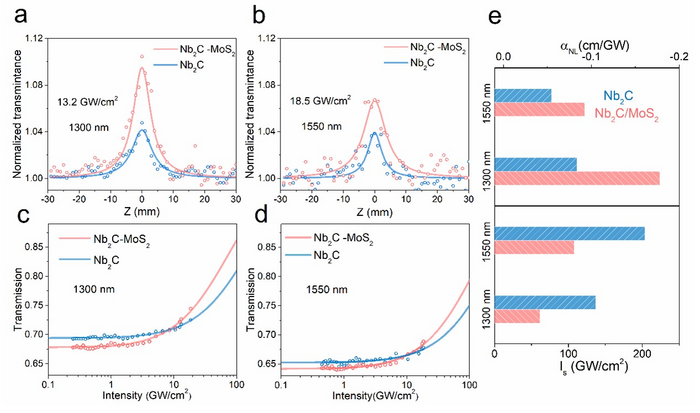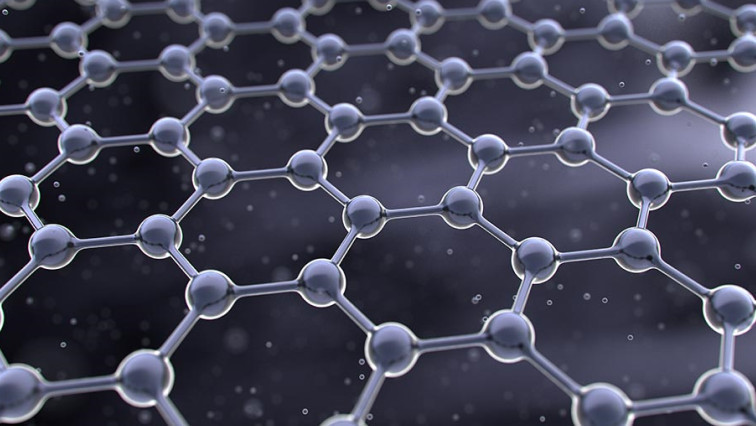MXenes represent a newly discovered class of two-dimensional layered materials, which showcase fascinating and tunable optical, chemical, and electronic properties, and exhibit diverse applications in fields such as photoelectricity, photothermal conversion, and photovoltaics. Furthermore, MXenes demonstrate strong nonlinear optical responses, and their nonlinear optical absorption can be adjusted by thickness, excitation wavelength, and surface groups.

OA Z-scan results of Nb2C/MoS2 and Nb2C with an excitation wavelength of (a) 1300 nm and (b) 1550 nm. The corresponding nonlinear transmittance curves under excitation optical intensity are shown in (c) and (d). (e) Fitted nonlinear optics parameter for comparison .
In addition, the construction of two-dimensional heterostructures represents an important strategy for enhancing the optoelectronic performance of devices that utilize two-dimensional materials. By employing careful design, the advantageous properties of each component within the heterostructure can be preserved, while novel characteristics such as charge transfer or energy transfer can be generated via the interfacial effects.
The authors of this article propose a simple and effective method for preparing Nb2C/MoS2 heterostructures with enhanced both linear and nonlinear optical properties.
In this work, MoS2 nanocrystals were successfully grown on the surface of Nb2C nanosheets in situ, resulting in the construction of a two-dimensional Nb2C/MoS2 heterostructure. It was found that this heterostructure outperformed pure Nb2C in both linear and nonlinear optics.
The study reveals that the surface group of Nb2C can modulate the work function of Nb2C/MoS2, which affects the charge transfer and energy alignment between Nb2C and MoS2. As a result, Nb2C/MoS2 inherits the advantages of Nb2C and MoS2 at different wavelengths and exhibits enhanced broadband optical absorption characteristics.
Furthermore, the research demonstrates that hole transfer from Nb2C to MoS2 leads to modulation of the nonlinear optical response in the heterostructure. It also proves that Nb2C/MoS2 has stronger and tunable near-infrared nonlinear optical absorption characteristics than pure Nb2C. The nonlinear absorption coefficient of Nb2C/MoS2 is more than twice that of pure Nb2C, as illustrated in Figure 1. This study presents an effective approach for the development of broadband optoelectronic devices and optical modulators. In particular, the findings provide a strong basis for the utilization of MXenes, which exhibit excellent photoelectric performance, in the field of optoelectronics.
Read the original article on EurekAlert.







